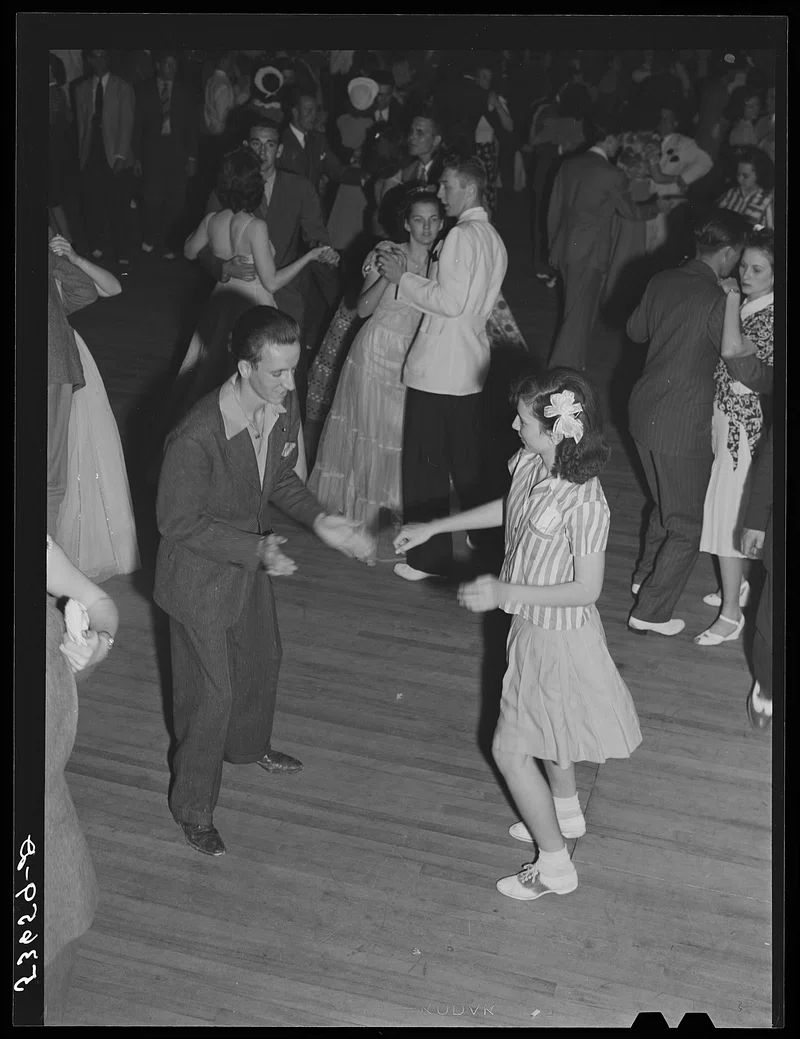
Flaco Jiménez, a Grammy-winning singer, songwriter, and accordion virtuoso, widely revered as the king of Tex-Mex music, has died. He passed away at the age of 86, leaving behind an unparalleled legacy of blending traditional Tejano sounds with diverse global influences. His death was announced on Thursday by his family in a social media post, confirming that he was surrounded by loved ones at the San Antonio home of his son, Arturo Jiménez.
Arturo Jiménez shared insights into his father’s final days, stating, “Dad was at peace when he left. He began saying his goodbyes several days before. He said he was proud of what he had accomplished and that he would leave behind memories for the public to enjoy. He said he was ready to go.” While the precise cause of death has not been determined, Mr. Jiménez had been hospitalized in January with an unspecified illness and was later released; his son noted that doctors had discovered a blood clot in his leg and some vascular issues at that time.
Born Leonardo Jiménez on March 11, 1939, in San Antonio, Texas, he was affectionately known to his vast fan base by his nickname, “Flaco.” This Spanish term, meaning “skinny” or “thin,” was attributed to his slight frame. The word “Flaco” itself carries a rich tapestry of meanings in Spanish-speaking cultures, often evolving from a literal description to a warm term of endearment, signifying closeness and camaraderie, particularly in regions such as Mexico and Argentina.

Mr. Jiménez’s musical journey began in a family steeped in the accordion tradition. Both his father, Santiago Jiménez, and his paternal grandfather were accomplished accordionists. His father, also known as Flaco, taught him to play the accordion, an instrument his father had learned from his own father, who, in turn, had picked it up from Bohemian immigrants settling in the San Antonio area in the early 20th century; these immigrants brought with them their polkas and waltzes.
Initially, the bajo sexto, a 12-string guitar, was Mr. Jiménez’s first instrument, but he transitioned to the accordion soon after he began playing alongside his father at the tender age of seven. By the age of 15, he had formed his own band, Los Caporales. This band name would serve as an alter ego throughout his career, reserved for lineups when he sought to play more traditional music, in contrast to the faster-paced, more modern sounds that later defined him.
He would reflect on this distinction, stating in 2012, “When I record in my own style, as Flaco Jiménez, it’s flashier, it’s more modern. This represents the old style.” This dual approach showcased his profound respect for his roots while simultaneously embracing innovation. It highlighted his innate ability to honor tradition without being confined by it, a characteristic that would become a hallmark of his long and illustrious career.

Mr. Jiménez first gained prominence across Texas in the 1960s, performing in the bustling dirt-floor dance halls throughout cities and towns along the U.S.-Mexico border. This early period was heavily influenced by the more traditional approach of his father, Santiago Jiménez, firmly grounding him in the sounds of conjunto music.
Conjunto, a musical genre indigenous to South Texas, originated over a century ago when Texans of Mexican heritage, known as Tejanos, developed an interest in the accordion music of German, Polish, and Czech immigrants. The resulting Tejano accordion music, often accompanied by the bajo sexto, emerged as a potent symbol of the Tejano way of life, particularly associated with agricultural labor.
This musical form, according to the Butler School of Music at the University of Texas at Austin, “remains unchanged and serves as a symbol that binds many Tejano communities in South and Central Texas.” Mr. Jiménez refined his conjunto skills by performing extensively in San Antonio’s saloons and dance halls, becoming a master of this foundational style before embarking on his expansive musical explorations.

Mr. Jiménez, however, possessed a profound desire to transcend the regional confines of the San Antonio scene in which he was raised. He once expressed this ambition directly: “I wanted to cross over. And I got lucky.” This aspiration fueled his relentless pursuit of new sounds and collaborations, transforming him into a global emissary for Tex-Mex music.
His artistic philosophy was rooted in the idea of fusion, as he articulated to The Worcester Telegram and Gazette in 1990: “I would consider our music as a bouquet of roses in rainbow colors, you know? Just imagine a bouquet of roses with only one color. It would be boring, man.” He resisted efforts to categorize his music, simply stating to The Los Angeles Times in 1994, “It’s just music. There’s nothing so different about any of it that you can’t find a way for them to meet.”
The expansion of Mr. Jiménez’s sound paralleled his growing list of celebrated collaborators. In the late 1960s, he began playing with Doug Sahm in his band, the Sir Douglas Quintet, an experience that introduced him to the broader world of rock music. The 1970s saw him delving into New Orleans blues through his work with Dr. John and exploring world-fusion sounds alongside Ry Cooder.
These pivotal collaborations, along with his feature in Les Blank’s 1976 documentary “Chulas Fronteras,” which showcased his family, propelled Mr. Jiménez onto the international stage. The result of this diverse immersion was a rollicking, upbeat accordion style that proved immensely influential among subsequent generations of Tex-Mex musicians, ensuring his legacy echoed through the jaunty sounds of countless contemporary quartets.
He became a highly sought-after session musician, lending his distinctive accordion to a remarkable array of artists across genres. In 1988, he played alongside Dwight Yoakam and Buck Owens on their version of “Streets of Bakersfield,” a collaboration that earned the trio a gold record. Kyle Young, CEO of the Country Music Hall of Fame and Museum, later attested to the song’s success, stating, “‘Streets of Bakersfield’ by Dwight and Buck wouldn’t have been the same without his sparkling touches.”
His remarkable versatility was further evidenced by his performance with Bob Dylan. In 1990, Mr. Jiménez played live with Dylan on “Across the Borderline,” a song originally recorded by Ry Cooder, during a concert in Montreux, Switzerland. This performance underscored his capacity to seamlessly integrate his unique sound into varied musical landscapes, demonstrating his effortless command of genre.

One of the most notable collaborations came in 1994 when Mr. Jiménez was invited to play with the legendary Rolling Stones on “Sweethearts Together,” a track featured on their album “Voodoo Lounge.” He also contributed his accordion work to The Mavericks’ 1995 hit, “All You Ever Do Is Bring Me Down,” which was recognized on Rolling Stone’s list of the 200 Greatest Country Songs of All Time.
His major label debut, Partners, released in 1992, aptly showcased many of the musicians with whom he had collaborated throughout his career. Raul Malo of The Mavericks profoundly articulated Mr. Jiménez’s transcendent impact: “There are musicians. There are great musicians. And then there are musicians who transcend their genre, their place in time, as well as cultural and social barriers.”
Malo continued, “They create something that generations will study, learn from, and adapt into their own versions to bring into the world. Flaco Jiménez was such a musician. It’s difficult to put into perspective what he managed to achieve. Simply put, he made a folk instrument (the three-button accordion) part of the mainstream.” This observation highlights Mr. Jiménez’s singular ability to elevate a traditional instrument to global recognition.
Throughout his career, Mr. Jiménez consistently adhered to his philosophy of musical amalgamation. As he articulated in 1973, “You have to play what’s happening in the world. Starting with polka, and a little rock and roll, or a little cumbia, cha-cha-cha… It’s pretty hard just to play polka, polka, polka, polka, or cumbia, cumbia, cumbia. You have to mix it up.” This approach ensured his music remained vibrant and perpetually relevant.
Beyond his session work, Mr. Jiménez was a foundational member of several influential Tex-Mex bands. He played with the country-inflected Free Mexican Airforce, further demonstrating his genre-bending capabilities. He also formed part of the Tejano supergroup, the Texas Tornados, alongside Freddy Fender, Doug Sahm, and Augie Meyers.
The Texas Tornados achieved significant acclaim, winning a Grammy Award in 1991 for their song “Soy de San Luis.” Mr. Jiménez also collaborated in another supergroup, Los Super Seven, a rotating collective of Tex-Mex and country artists that included Joe Ely, Freddy Fender, and Doug Sahm, earning another Grammy in 1999 for their collective efforts.
Mr. Jiménez amassed an impressive array of accolades throughout his career, cementing his status as a musical icon. He was the recipient of six Grammy Awards, five of which he won independently, and one with Los Super Seven. In recognition of his enduring contributions to music, he received a Grammy Lifetime Achievement Award in 2015.
His 1987 album, Ay Te Dejo en San Antonio, won a Grammy for its title track, a testament to his solo artistic prowess. In 1996, he secured another Grammy for Best Mexican-American Performance for his self-titled album. These awards underscore his consistent excellence and innovative approach within his genre.
Beyond the Grammys, Mr. Jiménez received widespread institutional recognition. He was inducted into the National Hispanic Hall of Fame and the NYC International Latin Music Hall of Fame. In 2014, he was named a Texas State Musician, a high honor within his home state, acknowledging his profound cultural impact.
In 2022, Mr. Jiménez was named a recipient of the National Medal of Arts. The White House commended him for “harnessing heritage to enrich American music,” further noting that by “blending Norteño, Tex-Mex, and Tejano music with the Blues, Rock ‘n’ Roll, and Pop Music, he sings the soul of America’s Southwest.”

Kyle Young, CEO of the Country Music Hall of Fame and Museum, articulated his significance by calling him “a paragon of Tejano conjunto music” who “drew millions of listeners into a rich musical world they might not have discovered on their own.” The Texas Conjunto Music Hall of Fame and Museum added that his passing “leaves a void in our hearts,” while U.S. Representative Joaquin Castro lauded him as “a pioneer in conjunto music.”
Despite his international fame and numerous accolades, Mr. Jiménez remained a humble, working-class San Antonian at heart. He once shared on the Robert Rivas radio show in 2015, “Sometimes people say, ‘You have recorded with this, you have done this, the Grammys and all,’ but actually, I am not a rich man. I am just a day-by-day worker, man. My fortune is my kids.”
His son, Arturo Jiménez, affirmed his father’s humility, stating that he “never wanted to be a showman and was focused on playing music for his fans.” Arturo recalled instances where fans would approach his father, literally crying and thanking him for his music, acknowledging its profound impact on their lives, whether in times of happiness or sadness.
Mr. Jiménez continued to tour internationally long after many of his contemporaries had scaled back their performances, maintaining vibrant fan bases in diverse regions such as Japan and Europe. He lived his entire life in San Antonio, a city he held deeply in his heart.
He frequently championed his hometown, stating in 2021, “San Antonio is a music city. Like Nashville is to country and New Orleans is to jazz, San Antonio is to conjunto. The whole city has a musical groove.” His connection to San Antonio was so profound that his son noted, “They call him ‘el hijo de San Antonio,’ and my dad was always proud of that,” quoting the Spanish phrase meaning “the son of San Antonio.”
His passion for his instrument was palpable, as he once described, “I like to make my accordion yell and scream and make it happy.” This vivid imagery encapsulates the joyful and expressive nature of his performances, a trait that endeared him to audiences worldwide. Even in his later years, when asked if he preferred to communicate in English or Spanish, he would deflect, simply stating, “I am not good at speeches. People who know me know I let my accordion talk for me.”
Flaco Jiménez leaves behind his wife, Adela, and their children, Arturo, Gilbert, Cynthia Jiménez, and Raquel Fernandez, along with his brother, Santiago Jr. His family plans to hold a private funeral service, which will be followed by a public celebration of his remarkable life.
Read more about: Julian Sands: Cause of Death Undetermined After Extensive Search in California Mountains

The indelible mark left by Mr. Jiménez on the global music scene cannot be overstated. His life served as a testament to the power of cultural exchange and the universal language of music. He not only preserved a cherished regional genre but also tirelessly expanded its boundaries, proving that authentic art knows no borders.
His accordion, a conduit for generations of Tejanos, became a voice that resonated with rock legends, folk icons, and country stars alike. Mr. Jiménez’s legacy lies not merely in the Grammys he won or the famed artists with whom he played, but in the enduring joy and the profound cultural bridge his music created. He was, as the Chicago Tribune aptly put it in 1992, to Tex-Mex what “Elvis Presley was to rock, Muddy Waters to blues…Charlie Parker to jazz.” The echoes of his joyful accordion will surely resonate for generations to come, reminding us of the maestro who made a folk instrument speak to the world.



